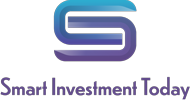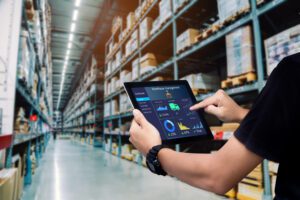There have been several exciting AI developments that apply to the retail industry in recent years and could help you streamline various aspects of your business.
ChatGPT aside, advancements in machine learning and adaptive AI put more power into your hands when it comes to automating core processes and using existing data to make accurate forecasts on future trends.
AI demand forecasting should be of particular interest to you if you’re curious about how AI can help you manage inventory.
What is AI Demand Forecasting?
AI demand forecasting involves the use of machine learning algorithms to predict when stock is likely to run low based on customer behaviour and purchasing trends.
By accessing historic data, AI can tap into analytics models to accurately estimate when you might run into issues with stock so you can be proactive rather than reactive in your approach to inventory management.
You can also use AI to run different simulations and imagined scenarios based on product price, consumer demand, and market conditions to get a clear idea of how to introduce new products to the market and keep stock levels high enough to satisfy demand.
What are the Benefits?
There are several reasons you might want to employ AI demand forecasting in your retail business.
Avoid Overstock and Stockouts
Both overstock and stockouts are common issues for retail businesses, and they can come at a significant cost.
Overstock, when you have more inventory than you need to meet demand, often results from overestimating the demand for a product. The issue here is you could end up sitting on a stock that never ships.
Stockouts, on the other hand, refer to when you don’t have enough stock to meet demand due to underestimating demand. This, of course, means you could lose out on a lot of money as consumers can’t buy from you when they want to and might not return to make the investment.
With AI demand forecasting, you can more confidently avoid both stocking issues. Automating parts of the supply chain could increase revenue by up to 4%, reduce inventory by up to 20%, and decrease supply chain costs by up to 10%.
Grounding your stock control decisions in concrete data and accurate projections is one of the main benefits of investing in AI.
Increase Product Availability to Meet Demand
Whenever consumers are met with an “out of stock” message upon checkout, it doesn’t send a good signal.
For many, it can be frustrating and worse for you, as the retailer can send them to alternative solutions from your competitors. Unless you have exceptionally strong branding and unique products, many consumers would sooner buy what they need elsewhere than wait for the product to come back in stock.
If you can show your consumers that you reliably have products in stock – and even when you do run low and replace stocks quickly – you put yourself in a great position to secure their repeat business. A study by PwC showed that 42% of consumers in 2023 cited products being out of stock as one of the biggest factors in their shopping experience.
With AI demand forecasting, you can make sure that product availability meets demand more often than not.
Improve Coordination with Suppliers
Your supply chain is crucial to your ability to meet demand and keep your customers satisfied. As such, it’s important that you take every precaution to ensure the chain doesn’t break down at any point.
According to McKinsey & Company, AI-driven forecasting to supply chain management can cut down errors by between 20-50%.
With AI demand forecasting, you can improve your communication and coordination with suppliers as you’re more readily able to provide forecasts and projections based on what you need for the upcoming months.
Are there any Limitations?
While AI demand forecasting is largely reliable, there are several factors to consider before investing. A study by IBM showed that 33% of enterprise-scale companies cited AI skills and expertise as a barrier to introducing AI, and 25% mentioned data complexity.
You need high-quality data – In order to make the most of AI demand forecasting, you need to feed it high-quality data so it can make the most accurate predictions. If the data you have isn’t clear, your mileage will vary.
The need for staff training – As with any new software solution or tool, AI demand forecasting requires a certain level of expertise to use well.
Ongoing cost – After the initial cost of the software, you’ll also have to consider a likely subscription fee and any costs associated with employee training.
Read more:
What Is AI Demand Forecasting? Could It Improve Stock Control?














